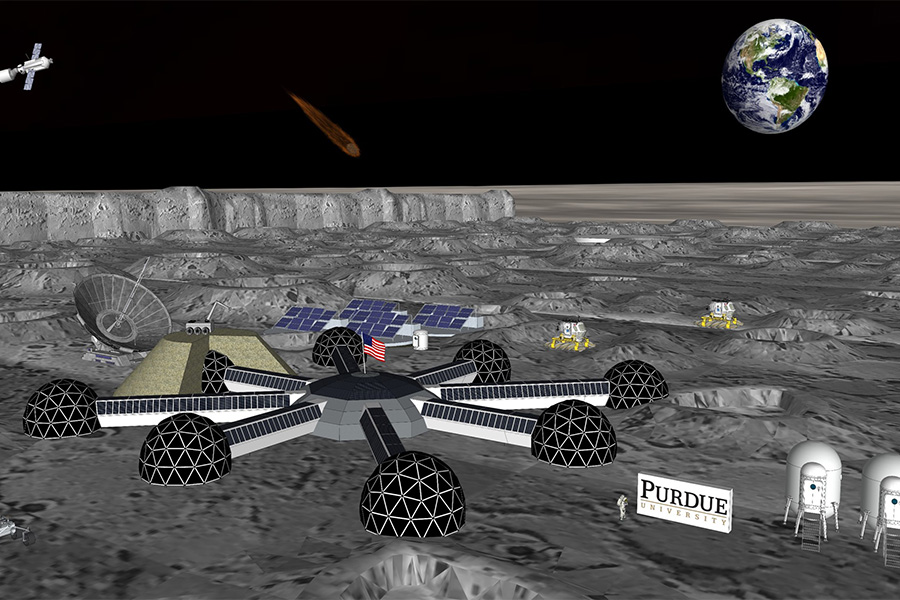NASA picks Purdue for new institute researching space habitats
A Purdue-led proposal was one of two selected by NASA for a new Space Technology Research Institute (STRI) to advance space habitat designs using resilient and autonomous systems.
Shirley Dyke, a professor of mechanical and civil engineering at Purdue, is the principal investigator for Resilient ExtraTerrestrial Habitats Institute, a multidisciplinary team in partnership with the University of Connecticut, Harvard, and the University of Texas at San Antonio.
Karen Marais, an associate professor in the School of Aeronautics and Astronautics, will lead one “thrust” of Purdue’s selected proposal: Smart design, growth and architecture for resilience.
“I’m incredibly grateful to be part of such a collaboration,” Marais says.

RETH Institute seeks to design and operate resilient deep space habitats that can adapt, absorb and rapidly recover from expected and unexpected disruptions. The institute plans to leverage expertise in civil infrastructure with advanced technology fields such as modular and autonomous robotics and hybrid simulation.
Through an integrated effort, RETH Institute will mature deep space habitats that can operate in both crewed and uncrewed configurations. The institute plans to create a cyber-physical prototype testbed of physical and virtual models to develop, deploy and validate different capabilities.
The objectives for the “smart design, growth and architecture for resilience” piece of the institute, led by Marais, are to establish a new approach to resilience for autonomous habitat systems, develop the control-oriented dynamic computational modeling platform, and validate and refine assumptions, interdependencies, models, system architectures and, more importantly, the resilience approach using cyber-physical testing.
Essentially, Marais will help assess and manage risk in a complex engineering system. That’s always difficult, whether it’s an aircraft or large chemical plant, but this project is especially challenging considering it is for deep space habitats.
“We’ve just made it orders of magnitude more difficult to do,” Marais says. “That’s a cool problem to work on but also one that’s essential. If we want to be able to colonize space, then we have to be able to figure out how to keep people safe, healthy, and productive. We might have this habitat uninhabited for periods of time. We need to make sure that it keeps functioning — when people come in and they want to open the door and go back in again, they can turn the lights on. That’s essentially what I’m doing, trying to come up with ways of designing for resilience and managing risk in a complex system that is far away. We can’t just go to the local hardware store and buy spare parts.”
The institute will receive as much as $15 million over a five-year period from NASA’s Space Technology Mission Directorate.
“This is an exciting opportunity for the RETH Institute research team to play a role in shaping the future smart space habitats,” Dyke says. “Developing resilient space habitats continues Purdue’s legacy of leadership and collaboration in science, engineering and space exploration.”

